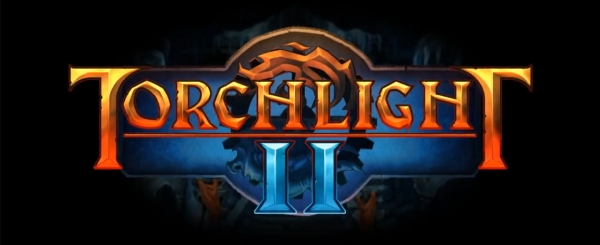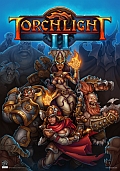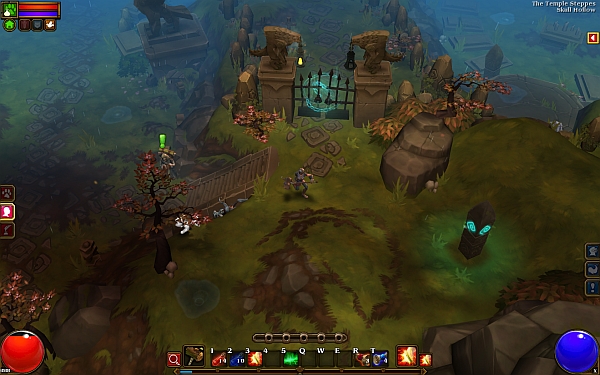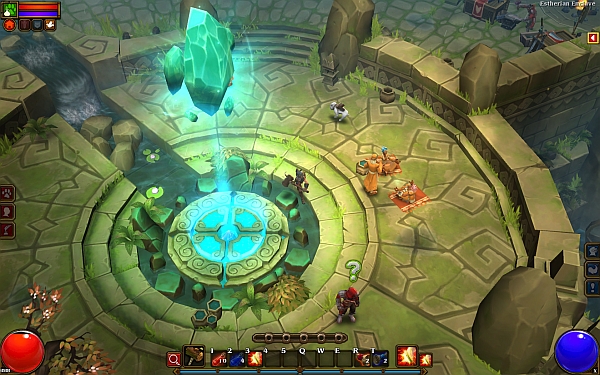
Torchlight II builds off of Torchlight‘s rock solid foundations to create a game that fully delivers on developer Runic Games’ goal to “give [the players] what they’re asking for.” Oddly, even though the game was in development long before Diablo III‘s release, what the players wanted seems to be all the things Diablo III got wrong.
Blizzard’s Diablo III is certainly the 800-pound gorilla in the room, and some might try to write a review of Torchlight II without mentioning its major league rival, but I’m not going to bother. Anyone who is a fan of the click n’ loot fest likely has played the Diablo games at some point, and that series pretty much defines all the core elements, so I see little reason in avoiding the comparison. Considering Torchlight’s developers include Max and Erich Schaefer, the co-founders of Blizzard North and co-creators of the Diablo series, it’s interesting to see how much Diablo has diverged while Torchlight II has remained true to its origins.
Platforms: PC
Publisher: Runic Games
Developer: Runic Games
Genre: Lootporn RPG
Release Date: September 20, 2012
ESRB Rating: Mature
 I had high hopes for Torchlight II and Diablo III both. Two games in a genre I like from the people that made the games which made me like that genre in the first place? Surely one of them would be perfect, right? Not so much. Both games are great but not as great as I had hoped. Both get a lot right and some things wrong. I’d say Torchlight II gets more right than wrong and Diablo III has some real issues. But while playing either one I can’t help but want features of the other or some kind of middle ground hybrid game. Chocolate or vanilla? But I wanted Tin Roof Sunday. In the end I’ll take chocolate, sure. By the way, Torchlight II is chocolate in this analogy.
I had high hopes for Torchlight II and Diablo III both. Two games in a genre I like from the people that made the games which made me like that genre in the first place? Surely one of them would be perfect, right? Not so much. Both games are great but not as great as I had hoped. Both get a lot right and some things wrong. I’d say Torchlight II gets more right than wrong and Diablo III has some real issues. But while playing either one I can’t help but want features of the other or some kind of middle ground hybrid game. Chocolate or vanilla? But I wanted Tin Roof Sunday. In the end I’ll take chocolate, sure. By the way, Torchlight II is chocolate in this analogy.
Graphically, Torchlight II isn’t pushing any limits. No gaming computer company is going to tout their rig’s ability to run Torchlight II like they seem to be doing for Diablo III. My graphics card is five years old now and runs both games fine. Everything in Torchlight II run smooth and crisp and the interface works well, but not to the level of silky polish that impressed me in Diablo III. The same can be said for the art and lighting, but it is a harder comparison because Runic Games isn’t really trying to compete in that department. I would describe Torchlight II’s art style as Disney’s Hercules meets World of Warcraft. Even the darkest dungeons run rampant with bright, colorful lighting. Everything has a fun, chunky, thick, cartoon-like quality about it which I really appreciate, even if I did miss the deeper, darker tones of the Diablo series. It’s not all kid gloves nice, though. Smash an enemy hard enough and he will explode in a plop of gore and leave red smears to show your handiwork. Sadly, there is no real physics engine fun going on here. Things die with canned animations and corpses largely vaporize when off screen. That and the relatively small amount of background interaction/destruction had me wishing for Diablo III’s rag-doll-corpse strewn battlefields and the rubble spray of exploding gravestones.
One thing I love is the conceptual design work throughout. The world has a great steampunk fantasy style that really sets it apart and is a lot of fun. There are a lot of interesting enemies to see, and I was continually surprised by how little Runic reused enemies with cheap color swaps and the like. It’s a blast to find different gear in these loot-driven games, but this is really made all the better when that gear consistently has such unique and varied designs. My favorites are the characters in the deserts of the second act. Persian style robot/mummies in clockwork ruins? Just too cool. Also, can I say I’d pay the cost of this game just for another Matt Uelmen soundtrack alone? Seriously, the Diablo music from Tristram rolls through my head at least once a week, and has been doing so for 16 years now. Mr. Uelmen has not lost his touch.
Sadly, the story isn’t as stand out as the music or art. In fact, with some name changes, the story is in essence the same as Diablo II much as the first Torchlight was the same as Diablo. It’s not terrible, but I would eventually like to see a click n’ looter game support an engaging storyline.

Gameplay-wise, Torchlight II has all the elements you are likely familiar with from any number of games in the genre: isometric view, third person, a red bubble filled with blood/life juice, a blue bubble filled with mana/magic juice, a bunch of programmable quick buttons in between that are keyed to your keyboard numbers, left mouse click for basic attack, right mouse click for a selected special attack, click where to walk, click to attack, click to grab stuff on the ground after enemies are dead, click click click click until you reach loot nirvana. Some neat additions to this include large melee weapons and ranged weapons like cannons and shotguns (spelled shotgonnes, which I love) doing area effects even on normal attacks. This makes fighting the swarms all the more gratifying. Using a rapid fire attack with a shotgonne’s cone-shaped area of death to paste 12 goblins into red stains on the snow? Hell yes.
Disappointingly, there are only four classes; to my tastes, and especially after so many other games of this ilk, I would have liked to have seen more. Unfortunately, the classes aren’t breaking out of the classic molds too much, either. If anything, I feel like they are all a bit too homogenized, though definitely not as bad as the first Torchlight. There is the Elementalist, fulfilling your standard spell-slinger roll. The Berserker fulfills the melee damager roll, but avoids the usual large weapons and instead focuses on claws or small hand weapons and rapid strikes. Next is the Outlander, who is the obligatory shooty-type class, but it does have some interesting hybrid range/melee potential. Since the game has a slew of distinct and different ranged weapons there are many cool variations possible here, such as dual rapid-fire pistols, long-range crossbow, or blast-damage shotgun, just to name a few. Lastly, and to my mind most interestingly, is the Engineer. The Engineer has the skills to be the heavy melee ground pounder, a tough-as-nails tank, a cannon-focused blaster, or a mecha-summoning character, each of which I found too tempting not to try. Plus, the male Engineer can have a badass bristle mustache and monocle. He is pretty awesome.
Leveling up gives two things to make your character unique, something Diablo III really seemed to forget to do. You gain ability points to increase your raw numbers and let you wear higher level gear faster. There is a small new twist on this which I like, and that is that all items have an either/or requirement. So an item can be used by anyone of a certain level, but alternately, if you have the correct stats for that particular item, you can equip it earlier. This combined with items that give ability bonuses can lead to some tough ability point choices and fairly complex item shuffling/juggling. Also, when you level up, you gain skill points to allocate to different powers in three different themed skill trees.
Each class has unique skill trees. This is an upgrade from the original Torchlight, which had many of the same abilities between classes. More powerful abilities can’t be unlocked until later levels in the traditional manner, but what’s new here is that abilities (but sadly not passive abilities) now have tiers within the ability themselves. This presumably allows an earlier unlocked ability to grow and change in more ways than raw stats. For example, putting 10 points into Storm Burst will unlock its tier two bonus, which adds a 30% chance to immobilize.

Sadly, none of the abilities are as diverse, dynamic, or interesting on the whole as the Diablo III powers. For instance, my berserker character at level one has an ability called Shadow Burst where he briefly turns into a shadowy wolf form and charges through enemies, but then later, at a higher level, I gained an ability called Savage Rush where I can hold down the button and turn into a shadowy wolf form and charge through enemies. There are some small differences, but in play they are pretty much the same thing. To Torchlight II’s credit, the skill points you plug in are pretty much permanent (you can only unspend the last three points spent). This means when you meet someone with a different build than yours, you do actually get a sense of divergent growth, which is fun, not to mention makes you want to play through again with the same class to try another build out. I can’t emphasize enough how big that is and how much Diablo III dropped the ball in that department.
There is a laundry list of other nice little changes and additions Runic has made to spruce up the genre’s game play and remove some of the more tedious tasks of earlier games. Most notable is the pets. Every character has a pet chosen at character creation and besides being adorable, the pet provide a number of benefits. They fight alongside you, sure, but more importantly, they have an inventory, like your character, which you can fill with junk items. You can then send the pet to town to sell them all off. This removes the need to constantly go back to town and unload bags of junk if you are like me and can’t leave even ruined cloth boots on the ground to go to waste. When the pet is in town he can pick up potions and scrolls as well, though this hasn’t been as necessary, as everything in the game seems to sweat healing potions. Alongside your character’s powers, the game has a huge amount of randomly dropped spells that you can equip and cast regardless of your class. This adds even more uniqueness to your character, and also harkens back to the first Diablo’s spell system. The best part of both of those elements is that your pet can equip these spells as well, which lets you basically autocast spells you would rather not bother keeping track of, like party heals. This, of course, leads to my pet summoning hordes of Skeletons and Zombies. That’s right, my character has a pet necromancer. He is a Bulldog and his name is Chain-Chomp.
Torchlight II is an easy game, as was Diablo III. The difference here is that in Diablo III, you had to play through the easy difficulties to get to the “real” game on your second or third playthrough with the same character, while Torchlight II simply lets you adjust the difficulty whenever you want. But what is probably the biggest deal maker here for people who felt burned by Diablo III is offline play. Good old-fashioned, free of the developers’ servers and whims, can play even when Verizon is being a bastard, single-player offline gameplay. You can buy it and then actually play it right then, no freakin’ duh. I’m firing death laser stares at Blizzard as hard as I can right now, you have no idea. I think this point and a few others highlight a general design philosophy that I would much rather support rather than Blizzard’s more draconian play-our-way outlook. While I’m sure that players saving their character files on their computers will lead to people using hacks (as opposed to Blizzard keeping player’s character files safe on their servers), I’d rather take that chance when it means that people can make mods for a game I like and increase its replayability. Nevermind that it lets me have as many characters as I want and I’m not tied to outside servers to play my game. This isn’t PvP and there isn’t a leaderboard, so what is the big concern other than trying to control your player’s experience with an iron grip?
All told, Runic made a great game in Torchlight II. It’s a healthy competitor to Diablo III and I hope they get their dues for it. Diablo III was pretty good too, but I personally hope Blizzard gets knocked down a few pegs for some of its design philosophies and money-grabbing shenanigans. If nothing else I’ve said has been very definitively one way or the other, then there is this: Torchlight II is only 20 dollars. It’s everything you want from a clickfest looter for one third the cost and none of the bull of its big-time competitor. If you are a fan of the genre, then give these guys your money, because they are giving you what you want on top of asking very little.

Review Disclosure: A retail copy of Torchlight II was purchased by Warp Zoned for the purposes of this review.







